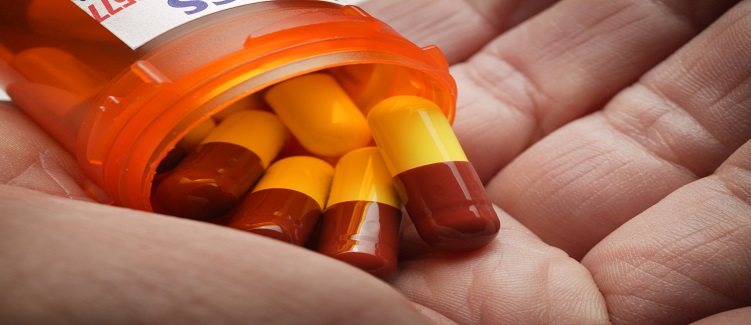Updated January 11, 2021
Just three decades ago, few people had heard of methicillin-resistant Staphylococcus aureus (MRSA), a type of bacteria that’s resistant to many antibiotics.
But today, the acronym MRSA can strike fear in anyone who has seen news reports about this potentially life-threatening infection.
While it’s true that some MRSA infections can be serious, you can take steps to keep yourself safe.
Never Miss a Beat!
Subscribe to Our HealthBeat Newsletter!
Thank you for subscribing!
You can now select the specific newsletters you'd like to receive.
You are already subscribed.
Subscribe to more newsletters in our email preference center.
Sorry, an error occurred. Please try again later.
Get Healthy Tips Sent to Your Phone!
What Is MRSA?
“About 2 percent of Americans chronically carry MRSA. This type of staph bacteria is the result of antibiotic overuse,” said Rebecca Simcik, DO, Greater Pittsburgh Medical Associates-UPMC.
When antibiotic drugs are overprescribed, bacteria have the chance to evolve to resist them. Infections that were once simple to treat can now survive and become much more serious — even deadly, in some cases.
“It’s important to take antibiotics only when necessary. Often your doctor won’t recommend antibiotics, especially for things like viral respiratory infections,” Dr. Simick said. “Reducing antibiotic use and regular handwashing are two key ways to help prevent MRSA infections.”
Staphylococcus Aureus
Staphylococcus aureus is a common type of staph bacteria. In fact, it’s on the skin and in the nose in nearly one-third of the general population.
Staph bacteria can be harmless unless they enter the body, often through:
- Scrapes
- Cuts
- Other small wounds
Once inside your skin, staph can cause minor infections in healthy people.
MRSA Risk Factors and Symptoms
MRSA can spread from person to person, either through skin-to-skin contact or by sharing personal items, such as towels or razors.
Infections with these bacteria are more common in areas where people share close quarters, such as:
- Hospitals
- Schools
- Locker rooms
- Military housing
Other risk factors for MRSA include:
- Contact sports
- Prolonged hospitalization
- Invasive procedures
- HIV infection
- Open wounds
MRSA symptoms
As with other staph infections, MRSA can cause a bump or infected area on the skin. On and around the bump, MRSA may create the following symptoms:
- Redness
- Swelling
- Painful, tender skin on and around the bump
- Bump full of pus or drainage
- Skin that feels hot to touch
Some people with MRSA infections mistake them for spider bites.
But, you should always call your doctor if you have these symptoms. He or she will need to run tests. Doctors can’t diagnose MRSA infections just by looking at them.
Left untreated, MRSA infections can quickly turn into deep abscesses or cause severe, possibly fatal infections of the blood, bone, and organs.
Diagnosing MRSA
Your doctor can diagnose you with MRSA by testing a tissue or nasal secretion sample. The provided sample is then sent to a lab where it is tested for signs of drug-resistant bacteria. The testing takes about 48 hours, but newer tests are able to provide results after just a few hours.
If you have MRSA, your doctor may try to drain the abscess to stop the infection. He or she may also prescribe specialized antibiotics.
Ways to prevent the spread of MRSA
“Reducing antibiotic use and regular handwashing are two key ways to help prevent MRSA infections,” Dr. Simick said.
You can take steps to control MRSA and prevent it from spreading:
- Keep the wound clean and covered until it has healed.
- Don’t try to pop, pick, or drain the sore on your own. You could spread the infection to other parts of your body.
- Wash your hands thoroughly and often.
- Don’t share personal items, such as towels, razors, and clothing.
- Wash sheets, towels, and clothes with laundry detergent and dry them in a clothes dryer.
MRSA Treatment
Most strains of MRSA can still respond to and be stopped by certain antibiotics. If the bump caused by MRSA gets large enough, it may need to be drained in emergency surgery in addition to antibiotics.
In some cases, fighting MRSA with more antibiotics is not necessary. Doctors may be able to drain a smaller boil caused by MRSA and may not need to provide additional antibiotics.
About Primary Care
The relationship with a patient and their primary care doctor can be extremely valuable, and that’s what you get with UPMC Primary Care. When you work with a primary care physician (PCP), you develop a lasting relationship. Your doctor will get to know you and your history and can plan your treatments accordingly. Our PCPs offer a variety of services, including preventive care and treatment for both urgent and chronic conditions. With dozens of UPMC Primary Care locations across our network of care, you can find a PCP close to you. Schedule an appointment today.
